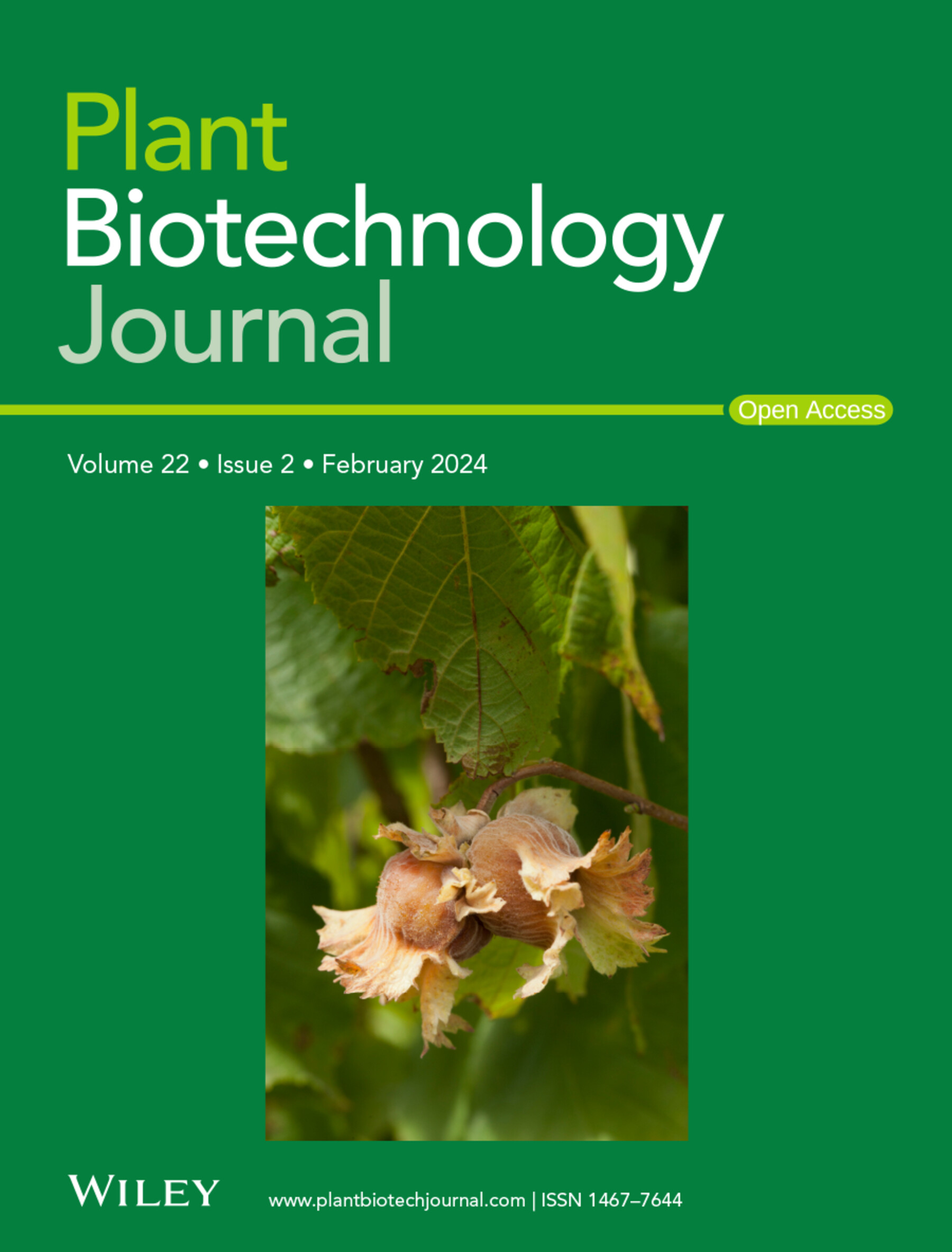GoSPGF‐GoPGF‐GhWRKYs转录级联正向调节陆地棉茎色素腺的形成
IF 10.1
1区 生物学
Q1 BIOTECHNOLOGY & APPLIED MICROBIOLOGY
引用次数: 0
摘要
摘要:棉花色素腺是棉花酚及其衍生物的储存库。色素腺的形态发生是复杂的,涉及调控细胞分化和发育的基因之间复杂但鲜为人知的相互作用。在这项研究中,我们发现了一个独特的腺体/棉酚簇,其中包括棉花色素腺形成的关键调节因子GoPGF,并通过空间转录组和单细胞RNA整合分析阐明了腺体细胞的发育轨迹。针对GoPGF,我们发现了一个GRAS转录因子GoSPGF,它通过直接结合其启动子的“AGAC”基序作用于GoPGF的上游。这导致GoPGF的产生,继而与WRKY基因启动子内的G - box和MYC元件结合,从而激活其表达。wwrky基因在棉花中被VIGS下调,导致茎和叶柄中腺体数量急剧减少。总的来说,我们的研究结果描绘了一个核心的转录途径,即GoSPGF - GoPGF - GhWRKYs级联,它赋予棉花茎中色素腺的形成。这些发现为棉花腺体形成的机制和调控途径提供了新的见解,并突出了培育低棉酚(无腺体)棉花的潜在候选物质。本文章由计算机程序翻译,如有差异,请以英文原文为准。
The GoSPGF‐GoPGF‐GhWRKYs transcriptional cascade positively regulates pigment gland formation in the stem of upland cotton
SummaryThe pigment gland in cotton (Gossypium hirsutum ) is a specialized structure that serves as a reservoir for gossypol and its derivatives. The morphogenesis of the pigment gland is complex and involves sophisticated but poorly understood interactions among genes that regulate cell differentiation and development. In this study, we identified a distinct gland/gossypol cluster which includes a key regulator of cotton pigment gland formation, GoPGF , and elucidated the developmental trajectory of gland cells through spatial transcriptome and single‐cell RNA integrative analysis. Focusing on GoPGF , we identified a GRAS transcriptional factor GoSPGF that acts upstream of GoPGF through directly binding to the ‘AGAC’ motif of its promoter. This leads to production of GoPGF that in turn binds to G‐box and MYC elements within the promoters of WRKY genes thereby activating their expression. Downregulation of WRKY genes by VIGS in cotton led to dramatic reductions in the number of glands in stems and petioles. Overall, our results delineate a core transcriptional pathway, the GoSPGF‐GoPGF‐GhWRKYs cascade, that confers pigment gland formation in the stem of cotton. These findings offer new insight into the mechanisms and regulatory pathways underlying cotton gland formation and highlight potential candidates for breeding low‐gossypol (glandless) cotton.
求助全文
通过发布文献求助,成功后即可免费获取论文全文。
去求助
来源期刊

Plant Biotechnology Journal
生物-生物工程与应用微生物
CiteScore
20.50
自引率
2.90%
发文量
201
审稿时长
1 months
期刊介绍:
Plant Biotechnology Journal aspires to publish original research and insightful reviews of high impact, authored by prominent researchers in applied plant science. The journal places a special emphasis on molecular plant sciences and their practical applications through plant biotechnology. Our goal is to establish a platform for showcasing significant advances in the field, encompassing curiosity-driven studies with potential applications, strategic research in plant biotechnology, scientific analysis of crucial issues for the beneficial utilization of plant sciences, and assessments of the performance of plant biotechnology products in practical applications.
 求助内容:
求助内容: 应助结果提醒方式:
应助结果提醒方式:


